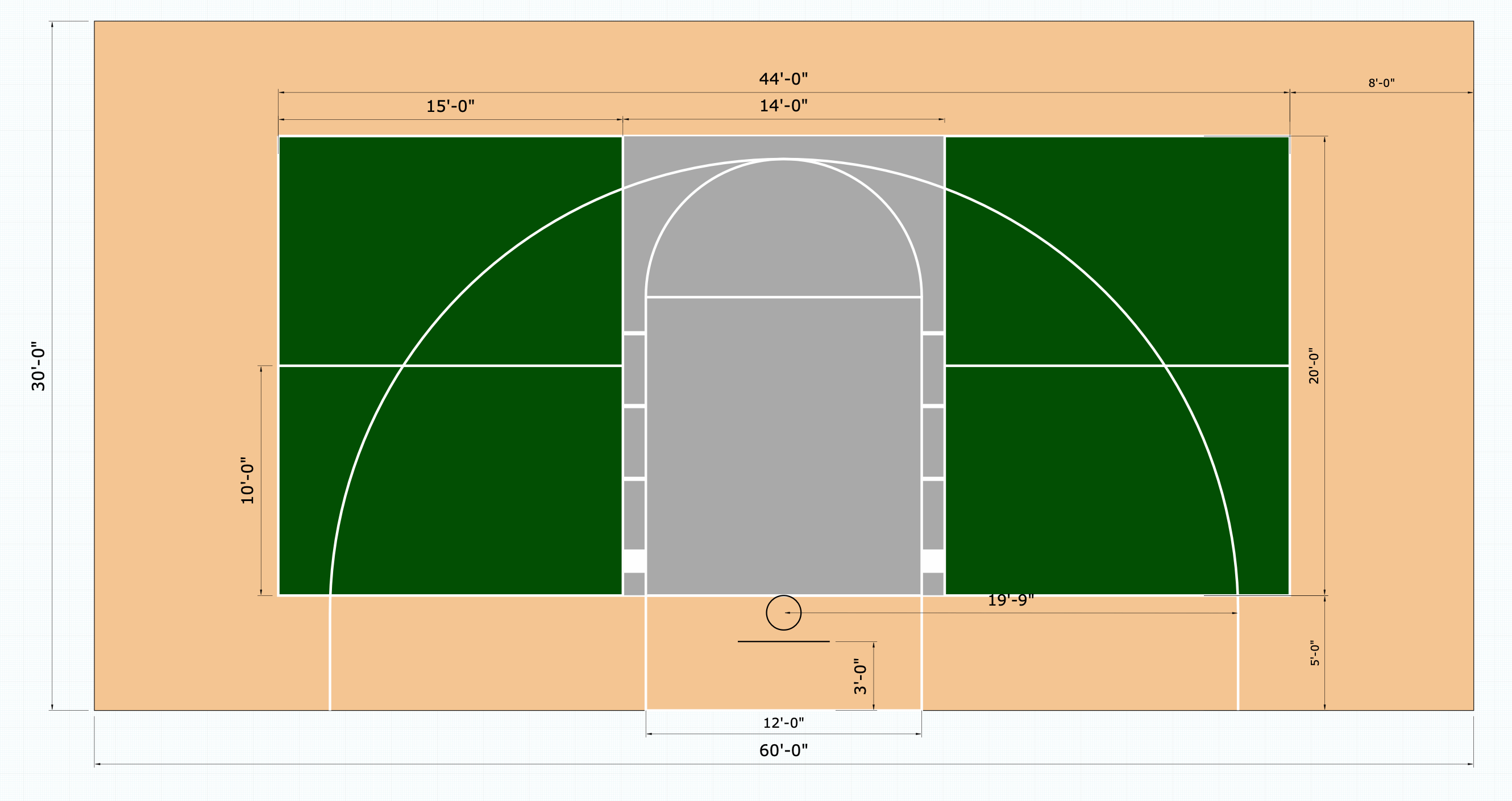Change Your Area with Quality Pickleball Judiciaries Style & Construction in Illinois and Midwest
Secret Elements in the Construction of Pickleball Courts: From Website Choice to Last Finishes
The building and construction of pickleball courts includes a series of important aspects, starting with the option of an ideal website that balances availability with environmental considerations. Necessary components such as court dimensions, surface products, and drainage systems dramatically influence not just the top quality of play but likewise the long life of the center. Additionally, focus to lighting and completing touches can raise the total experience for gamers and viewers alike. Comprehending just how each of these elements interrelates may expose understandings that are commonly neglected, motivating a more detailed evaluation of finest techniques in court building.
Site Option Criteria
When starting the construction of pickleball courts, it is important to nail down the website option standards that will ensure optimal playability and ease of access. The location must be easily obtainable for players, preferably located near suburbs or recreation center, to encourage participation.
Additionally, the surface must be level and secure, as irregular ground can result in safety dangers and influence gameplay. Ample drainage is likewise essential; picking a site with great water overflow will aid preserve court conditions during unfavorable weather condition.
One more important consideration is the availability of energies. Accessibility to electrical power and water is required for lighting and upkeep functions. Furthermore, closeness to auto parking centers is necessary, promoting easy gain access to for gamers and spectators alike.
Ecological elements can not be forgotten; all-natural shade from trees can improve player convenience, while exposure to dominating winds might interfere with play. Finally, zoning laws and neighborhood assistance should be considered to make sure that the task aligns with local guidelines and receives the backing it requires for effective application. By very carefully assessing these criteria, stakeholders can create a welcoming and useful environment for pickleball lovers.
Court Capacities and Format
To make sure optimum gameplay and adherence to regulations, the measurements and format of pickleball courts should be thoroughly defined. A typical pickleball court determines 20 feet in width and 44 feet in length for both singles and increases play.
The internet height is set at 36 inches at the sidelines and 34 inches at the facility, developing a minor dip that impacts round trajectory. Court markings are just as important; lines must be 2 inches vast and distinct in shade to ensure presence.
Furthermore, a barrier zone surrounding the court is advisable, normally prolonging 5 to 10 feet past the sidelines and standards to fit gamers' motions and improve safety and security. Proper design and dimensions not only guarantee compliance with main policies however also improve the overall playing experience, suiting both recreational and affordable play. Cautious planning in these areas is critical to the effective building and construction of pickleball courts.
Surface Area Material Options
Selecting the best surface area product for pickleball courts is vital for making sure ideal player efficiency and security. The selection of surface can significantly influence gameplay, consisting of round bounce, grip, and player comfort.
There are several options offered, each with its unique features. Asphalt is a prominent option because of its resilience and reduced maintenance demands. It gives a strong playing surface area that can hold up against different weather but might call for periodic resurfacing.
Concrete is one more commonly utilized product, supplying excellent long life and a smooth coating. It permits regular sphere bounce yet can be difficult on players' joints, making it much less preferable for long-lasting play without correct padding.
For those seeking enhanced comfort and shock absorption, supported acrylic surface areas present a viable choice. These surfaces integrate a base layer with an acrylic overcoat, supplying enhanced grip like it and a softer feel, which is useful for reducing the risk of injuries.
Lastly, synthetic grass is obtaining grip, particularly for multi-purpose centers. Its flexibility and reduced maintenance needs make it an attractive alternative, though it might not provide the same sphere reaction as standard hard courts. Cautious factor to consider of these alternatives will certainly ensure an ideal playing setting.
Drain and Lights Considerations
Correct drainage and reliable lights are essential parts in the construction of pickleball courts, dramatically affecting both playability and security. Ample drainage systems stop water buildup, which can lead to slippery surfaces and damage to the court structure.
Lighting is equally vital, specifically for courts planned for night usage. The placement of lights fixtures should be strategically planned to remove shadows and offer even distribution of light throughout the court.

Last Surfaces and Maintenance
After resolving water drainage and lighting factors to consider, attention transforms to the final finishes and ongoing maintenance of pickleball courts. Usual alternatives include acrylic coverings and specialized sporting activities surface areas that give ideal grip and cushioning.

Seasonal maintenance could consist of resurfacing every visit this site couple of years, depending on usage and environmental factors. Properly preserving nets, court lines, and bordering areas is similarly important to provide a secure and enjoyable playing experience. By buying top quality finishes and adhering to a structured upkeep timetable, facility owners can guarantee their pickleball courts continue to be in exceptional problem for several years to find.
Conclusion
Finally, the effective building and construction of pickleball courts depends upon precise attention to a number of key factors. Site selection must prioritize ease of access and surface stability, while court measurements and format have to stick to optimum criteria for gameplay. The selection of surface material dramatically affects gamer security and performance. Reliable drain and adequate lighting add to court long life and visibility. Finally, quality surfaces and a robust upkeep schedule are vital for maintaining the court's condition, enhancing the general experience for players and spectators alike.